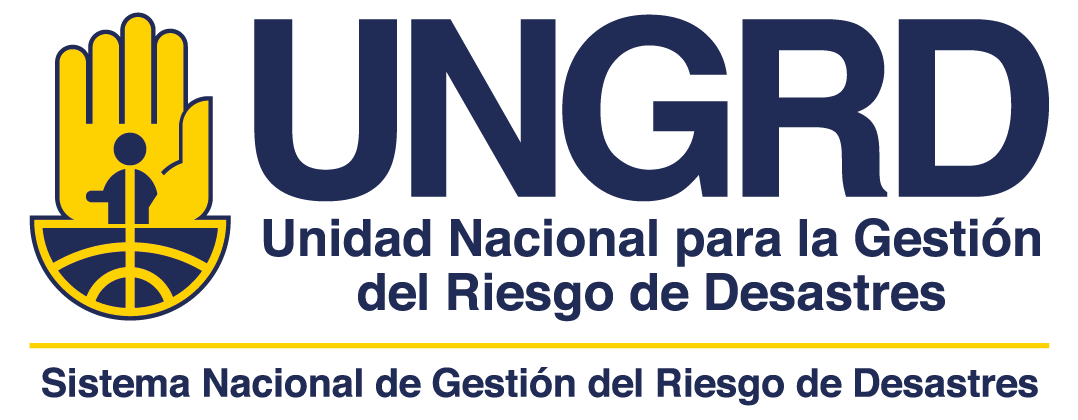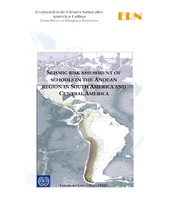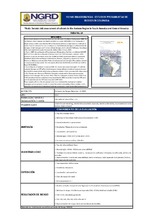Mostrar el registro sencillo del ítem
Seismic risk assessment of schools in the Andean Region in South America and Central America
| dc.creator | Evaluación de Riesgos Naturales - AL (ERN) | |
| dc.date.accessioned | 2016-07-28T13:31:10Z | |
| dc.date.available | 2016-07-28T13:31:10Z | |
| dc.date.issued | 2010 | |
| dc.identifier.citation | Evaluación de Riesgos Naturales - AL (ERN). (2010). Seismic risk assessment of schools in the Andean Region in South America and Central America . Bogotá. International Labor Office - ILO | |
| dc.identifier.uri | http://hdl.handle.net/20.500.11762/19874 | |
| dc.description.abstract | During seismic disasters schools have been severely affected. In the Molise Earthquake in 2002, the San Giuliano school colapsed and killed most of the occupants (EERI 2003). In the Earthquake of Bingol, Turkey in 2003, more than the 48% of the schools suffered damages between moderate to severe. From 27 schools in the zone, 4 collapsed or resulted heavily damaged, 9 suffered moderate damages, 11 light damages and 3 remain without damages. In the school of Celtiksuyu, the collapse of the building killed 84 people, the majority, children (Ellul y D Ayala 2003). In Perú, in 2007, the earthquake of Pisco destroyed 18 educational facilities and affected 118 (EERI 2007). In China, after the earthquake of Sichuan more than 7,000 classrooms collapsed. In the provinces of Sichuan and Gansu, more than 12,000 and 6,500 schools were affected respectively (Reliefweb 2009). In the earthquake of Balochistan, Pakistan, 100 primary schools in the Ziarat District and 28 primary schools of the Pishin district were partially damaged. The academic activities were postponed during a week. This interruption affect near 20,000 children in Pishin and 3.845 in Ziarat (OCHA 2008c). In the earthquake of Southern Sumatra in 2009, 241 schools were severe damaged, 175 suffered moderate damages and 87 suffered light damages, leaving without educational resources to more than 90,000 students (OCHA 2009). In the earthquake of Haiti in 2010, more than 97% of the schools in Port Principe were destroyed. The half of the public schools and the three main universities suffered severe damages (Fierro y Perry 2010). After the earthquake of Maule, Chile in 2010, from 4,432 educational facilities evaluated, it was found that the 63% may be functional, the 14% were partially operative and the 23% were evacuated (CERF 2010). Those negative effects in the educational sector have motivated the development of global campaigns and local projects in order to reduce the seismic vulnerability of these facilities. In this sense, the risk assessment of educational buildings is necessary in order to establish a reference of the potential losses and to estimate the resources that may be necessary for vulnerability reduction, in order to protect the life of the children and guarantee the safety of the structures and public investments in education. These goals are restricted by the socioeconomic context and the local seismic pre requisites, thus, the seismic vulnerability reduction must rely on robust benefit cost relations that encompasses the social, economic and financial dimensions. For regional comparison and national screening purposes, this report presents rough estimates of the seismic risk of schools of the countries in the Andean Region and Central America from a probabilistic approach. The risk is expressed in terms of the exceedance loss rate and the Average Annual Loss of the schools portfolio of each country in both the current and retrofitted case.The probabilistic methodology used is considered the most robust for this type of modeling and identifies the most important aspects of catastrophe risk from financial protection perspective in according to the fiscal responsibility of the State. In addition, the results of the analysis may be particularly useful in guiding the national seismic risk reduction programs of the educational sector. The methodological and technical foundations of this risk assessment are the models made by this consultant group for the development of ERN-CAPRA (Comprehensive Approach for Probabilistic Risk Assessment), an open architecture platform designed with support of the IDB, the World Bank and the UN International Strategy for Disaster Reduction. Details of the model and its implementation are available at www.ecapra.org This report is organized in seven chapters. In chapters two and three are presented the objectives and scope of this consultancy. In chapter four are briefly described some recent campaigns and experiences of risk reduction on schools. It is useful in order to identify the methodological aspects in seismic risk assessment, the agents involved, and the information used on each analysis. In chapter five are presented the methodological procedures considered in this study for the estimation of losses due to seismic events. The results of the seismic risk assessment in schools are presented in chapter six, it includes a general overview of the educational context in Latin America and the estimates of the exceedance loss curve for the schools portfolio of each country included in the analysis. Finally in chapter seven are presented commentaries of the results and benefits of seismic reduction of educational facilities. | |
| dc.description.sponsorship | Ingeniar LTDA, ITEC SAS, CIMNE, ERN Ingenieros consulores S.C. | |
| dc.format | Digital (.pdf) | |
| dc.language.iso | en | |
| dc.publisher | International Labor Office - ILO | |
| dc.source | - | |
| dc.source | instname:Unidad Nacional para la Gestión del Riesgo de Desastres | spa |
| dc.source | reponame:Repositorio Institucional Unidad Nacional para la Gestión del Riesgo de Desastres | spa |
| dc.subject | Seismic hazard modeling | |
| dc.subject | seismic risk assessment | |
| dc.subject | exposure | |
| dc.subject | seismic vulnerability | |
| dc.subject | loss exceedance curve | |
| dc.subject | Andean Region | |
| dc.subject | Bogotá | |
| dc.title | Seismic risk assessment of schools in the Andean Region in South America and Central America | |
| dc.type | info:eu-repo/semantics/article | spa |
| dc.description.departamento | BOGOTÁ | |
| dc.type.spa | Informe técnico | |
| dc.rights.accessRights | info:eu-repo/semantics/openAccess | spa |
| dc.description.volumen | Único | |
| dc.type.hasVersion | info:eu-repo/semantics/acceptedVersion | spa |
Ficheros en el ítem
Este ítem aparece en la(s) siguiente(s) colección(ones)
-
Informes [55]




